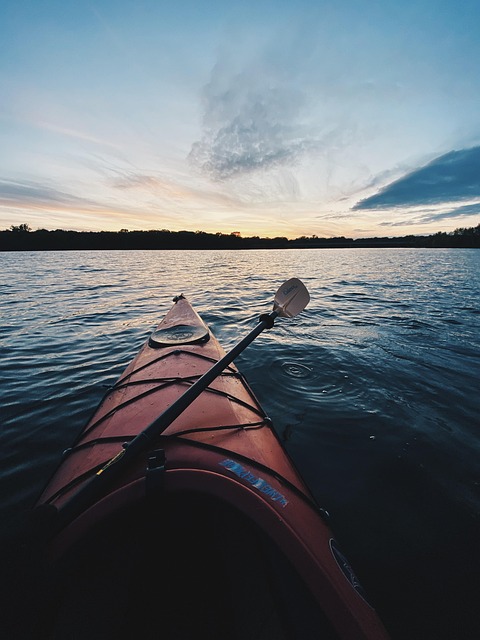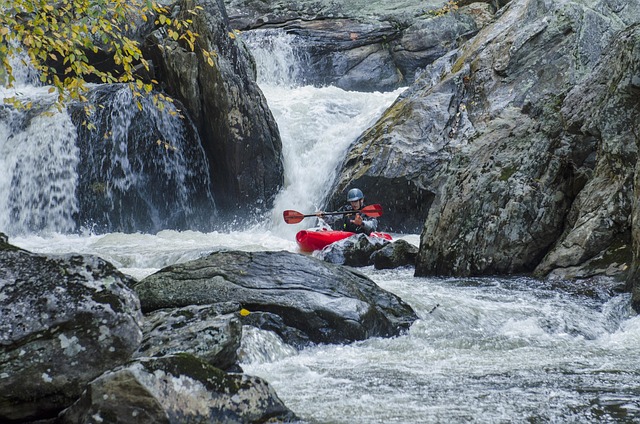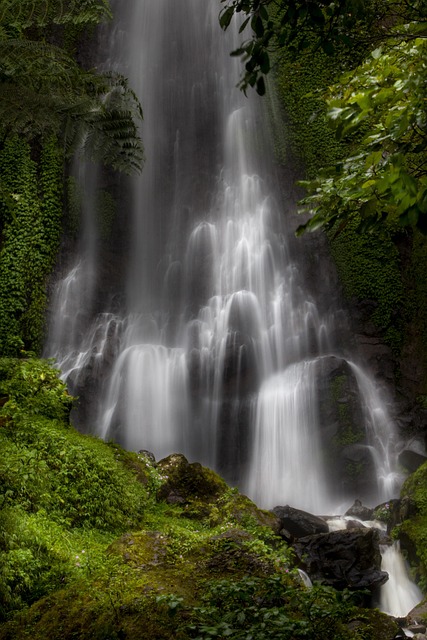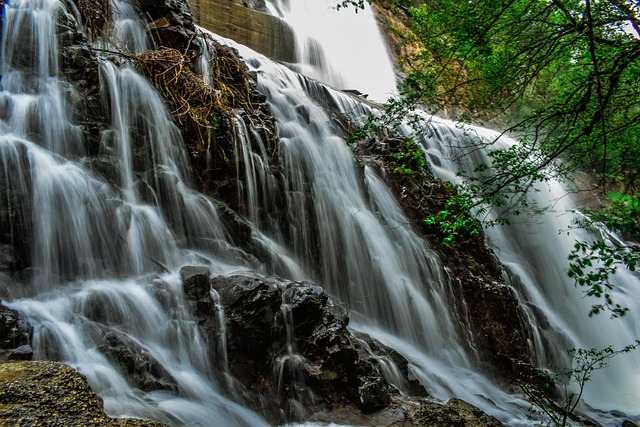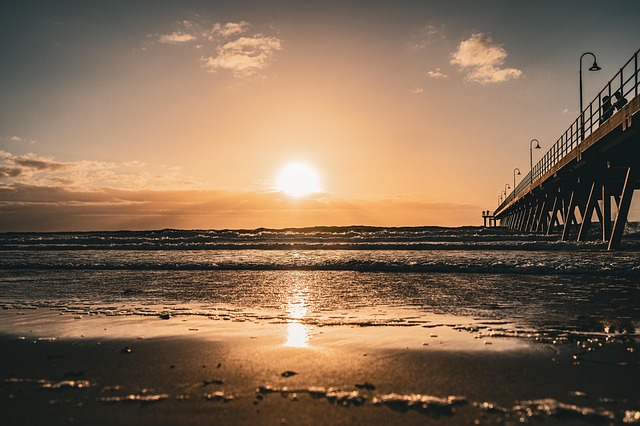
Category: Kayaking on the McKenzie River
Kayaking on the McKenzie River: A Comprehensive Exploration
Introduction
In the heart of Oregon’s scenic Cascade Mountains lies a waterscape that has captivated paddlers and outdoor enthusiasts for generations – the McKenzie River. This majestic waterway, renowned for its pristine beauty and challenging currents, offers an unparalleled kayaking experience. From novice paddlers exploring its tranquil upper reaches to seasoned adventurers navigating the rapids near its confluence with the Willamette River, the McKenzie River caters to a diverse range of interests.
This article embarks on a journey to uncover the multifaceted world of kayaking on the McKenzie River, delving into its rich history, global appeal, economic impact, technological innovations, regulatory framework, and the challenges it faces. By exploring these aspects, we aim to provide an comprehensive understanding of this unique recreational activity and its role in shaping local economies and communities.
Understanding Kayaking on the McKenzie River: A Definition and Its Essence
Kayaking on the McKenzie River refers to the sport and recreation of paddling a kayak along the various segments of the McKenzie River, located primarily in Linn and Lane Counties, Oregon. The river stretches for approximately 260 miles (418 km), meandering through lush forests, dramatic canyons, and pristine wetlands before merging with the Willamette River near Springfield.
At its core, this activity involves propelling a kayak using a double-bladed paddle, allowing enthusiasts to explore the river’s diverse landscapes. Kayaking offers a unique perspective, providing access to remote areas and wildlife habitats that are often inaccessible by other means. The experience ranges from serene float trips through tranquil waters to thrilling ventures through class III-IV rapids, catering to kayakers of all skill levels.
Historically, Native American tribes like the Kalapuya and the Willamette had close connections with the McKenzie River, using it for transportation, fishing, and hunting. In modern times, kayaking on the McKenzie River began gaining popularity in the 1970s when a group of enthusiasts started exploring its upper reaches. Since then, it has evolved into a thriving recreational activity and a significant contributor to Oregon’s outdoor tourism industry.
Global Impact and Trends: A World-Wide Fascination
The appeal of kayaking on the McKenzie River extends far beyond Oregon’s borders, reflecting a global trend in outdoor recreation. This phenomenon can be attributed to several factors:
-
Nature Connection: In an era dominated by urbanization and technology, kayaking offers a direct connection with nature, allowing individuals to immerse themselves in breathtaking landscapes. The McKenzie River’s diverse ecosystems, from old-growth forests to rugged canyons, provide a captivating setting for this activity.
-
Outdoor Tourism Boost: As destinations worldwide recognize the economic potential of outdoor adventures, kayaking on rivers like the McKenzie becomes a draw for tourists seeking unique experiences. This trend contributes to local economies and promotes sustainable tourism practices.
-
Health and Wellness: The growing emphasis on health and wellness has led many to embrace water sports as a form of exercise and stress relief. Kayaking provides a full-body workout while offering a tranquil way to explore nature, appealing to fitness enthusiasts and those seeking mindfulness.
-
Environmental Awareness: River kayaking fosters a deeper understanding and appreciation for environmental conservation. Paddlers often develop a strong connection with the river’s ecosystem, leading to increased awareness about water quality issues and habitat preservation.
Global Trends Shaping Kayaking:
-
Whitewater Kayaking Growth: There has been a significant rise in whitewater kayaking around the world, with increasing difficulty levels attracting more experienced paddlers. The McKenzie River’s diverse rapids cater to this trend, offering class I-V sections for all skill levels.
-
Eco-Tourism Focus: Many destinations are promoting sustainable tourism practices, and river kayaking often aligns with these goals. The McKenzie River’s natural beauty and ecological significance make it an ideal candidate for eco-tourism initiatives.
-
Digital Influence: Social media platforms and online communities have played a pivotal role in spreading awareness about kayaking destinations. Hashtags like #McKenzieRiverKayak and #OregonKayaking attract enthusiasts, fostering a global community of kayakers.
Economic Considerations: A Vital Component of Local Economies
The economic impact of kayaking on the McKenzie River is substantial, contributing to local tourism, employment, and business development. Here’s an analysis of its economic aspects:
| Economic Sector | Impact |
|---|---|
| Tourism | Kayaking is a significant draw for visitors to Oregon, particularly during spring and summer when water levels are optimal. According to the Oregon Tourism Commission, outdoor recreation accounts for approximately 3% of the state’s GDP, with river kayaking contributing substantially to this figure. |
| Local Businesses | River guide services, kayak rentals, outfitters, and nearby accommodations benefit from the kayaking industry. In 2021, the McKenzie River Kayaking Association reported that these businesses generated over $3 million in revenue directly related to kayaking activities. |
| Employment | The sector creates a range of jobs, including river guides, shop owners, maintenance workers, and support staff. During peak seasons, numerous part-time and full-time positions are available, offering employment opportunities for locals and visitors alike. |
| Community Development | Kayaking events and festivals attract volunteers and investors, fostering community engagement and economic growth. For instance, the annual McKenzie River Canoe & Kayak Festival attracts thousands of participants and visitors, boosting local businesses and tourism. |
Technological Advancements: Enhancing the Kayaking Experience
Technology has played a transformative role in kayaking on the McKenzie River, improving safety, navigation, and overall enjoyment. Here are some significant advancements:
-
GPS and Navigation Devices: Modern GPS devices and apps allow kayakers to track their route, monitor water levels, and access real-time data on river conditions. This technology enhances safety, especially for those exploring remote sections of the river.
-
Hydrophones and Communication Systems: Wireless communication devices enable kayakers to maintain contact with support teams or fellow paddlers, improving safety during group trips. Hydrophones with Bluetooth connectivity allow users to listen to music or podcasts while kayaking.
-
Advanced Kayak Design: Manufacturers have introduced innovative kayak designs tailored for different river conditions. These include high-performance whitewater kayaks with improved maneuverability and stability, as well as lightweight touring kayaks for longer trips.
-
Online Resources and Communities: Websites, forums, and social media groups provide valuable information, trip planning resources, and a platform for kayakers to share experiences. These digital platforms have fostered a global community of enthusiasts, encouraging knowledge exchange and collaboration.
Policy and Regulation: Ensuring Responsible Kayaking
The McKenzie River, like many waterways, is subject to various policies and regulations aimed at preserving its ecological integrity and promoting safe kayaking practices. Key frameworks governing this activity include:
-
Oregon Department of Fish and Wildlife (ODFW) Regulations: The ODFW oversees watercraft activities on Oregon’s rivers, including the McKenzie. They enforce rules related to boater education, licensing, and safety equipment requirements. Kayakers must obtain a valid Oregon Watercraft Registration and follow guidelines for maintaining river health.
-
National Park Service Guidelines: Portions of the McKenzie River fall within the boundaries of Mount Hood National Forest and Willamette National Forest, managed by the National Park Service. These areas have specific regulations regarding access, camping, and waste disposal to protect natural resources.
-
Local City and County Ordinances: Local governments also have rules governing river activities. For instance, Springfield, Oregon, has ordinances related to watercraft noise levels and waste management to ensure a peaceful and clean river environment.
-
River Conservation Organizations: Groups like the McKenzie River Canoe & Kayak Association work closely with authorities to promote responsible kayaking practices. They advocate for river protection, access, and education, providing resources and organizing events that foster a sense of community among kayakers.
Challenges and Criticisms: Overcoming Obstacles
Despite its immense popularity, kayaking on the McKenzie River faces several challenges and criticisms that require attention and proactive solutions:
-
Water Quality Concerns: Erosion, agricultural runoff, and urban development can impact water quality. High water levels during storms may wash pollutants into the river, posing risks to paddlers’ health and the ecosystem. Implementing best management practices for land use and water pollution control is crucial.
-
Overcrowding and Impact on Wildlife: The popularity of kayaking has led to increased visitor numbers, potentially disturbing wildlife and causing habitat degradation. Managing visitor access and implementing seasonal restrictions may be necessary to minimize these impacts.
-
Access and Inequality: Not all segments of the river are easily accessible, creating disparities for kayakers with disabilities or those from underserved communities. Efforts should be made to promote inclusivity by providing accessible launch sites and encouraging diverse participation.
-
Lack of Education and Training: Some newcomers may lack basic kayaking skills or understanding of river safety. Offering educational programs and training workshops can enhance their experience and reduce potential hazards.
Case Studies: Exemplary Applications and Lessons Learned
1. McKenzie River Canoe & Kayak Festival
This annual event is a prime example of successful community engagement and river conservation. The festival attracts hundreds of kayakers, tourists, and volunteers, showcasing the region’s rich kayaking culture. Through this platform, local businesses, environmental organizations, and government agencies collaborate to:
- Promote River Safety: Educational workshops and demonstrations are held to teach proper kayaking techniques, river awareness, and safety protocols.
- Raise Environmental Awareness: Information sessions highlight water quality issues, habitat conservation efforts, and sustainable practices for river users.
- Foster Community Engagement: The festival includes a community clean-up event, where volunteers remove litter from the riverbanks and waterways, fostering a sense of collective responsibility.
2. Whitewater Rafting and Kayaking Guide Training Programs
Several organizations in Oregon have implemented comprehensive guide training programs to ensure safe and responsible river tourism. These programs educate guides on:
- River Dynamics: Understanding current patterns, rapids classifications, and potential hazards enables guides to make informed decisions and provide a safe experience for clients.
- Wildlife Management: Training includes learning about local wildlife, their behaviors, and how to minimize disturbance during trips, promoting conservation efforts.
- Emergency Response: Guides are equipped with skills to handle various emergencies, from minor injuries to more critical situations, ensuring prompt and effective responses.
Future Prospects: Exploring New Horizons
As kayaking on the McKenzie River continues to evolve, several growth areas and emerging trends hold promise for its future:
-
Eco-Tourism Expansion: With growing awareness of sustainable tourism, there is potential to develop eco-tourism initiatives that educate visitors about the river’s ecological significance. This could include guided nature walks, bird-watching tours, and environmental education programs.
-
Adaptive Kayaking Programs: Expanding opportunities for individuals with disabilities through adaptive kayaking equipment and specialized programs can attract a broader audience. These initiatives promote inclusivity and enhance the overall kayaking experience.
-
Technological Innovations: The integration of virtual reality (VR) and augmented reality (AR) technologies in training and planning could revolutionize kayak preparation. VR simulations can help beginners practice skills in a safe, immersive environment, while AR apps can provide real-time river data during trips.
-
International Collaboration: Building global partnerships with kayaking communities worldwide can lead to cultural exchanges, shared learning, and the promotion of Oregon’s unique kayaking destination on an international stage.
Conclusion: Paddling Towards a Brighter Future
Kayaking on the McKenzie River has evolved from a local pastime to a globally recognized recreational activity, leaving a positive impact on economies, communities, and environmental conservation efforts. Through understanding its historical roots, global appeal, economic significance, technological advancements, regulatory frameworks, and addressing challenges, we can ensure its continued prosperity.
As the world seeks more authentic outdoor experiences, kayaking on this iconic Oregon river will undoubtedly remain a magnet for enthusiasts worldwide. By embracing sustainable practices, fostering community engagement, and leveraging technological innovations, the future of kayaking on the McKenzie River looks bright, promising unforgettable adventures for generations to come.
FAQ Section: Answering Common Queries
Q: What is the best time of year to kayak on the McKenzie River?
A: Spring (April-May) and early summer offer ideal conditions with moderate water levels and pleasant weather. However, the river remains accessible and enjoyable throughout the year, each season providing unique experiences.
Q: Do I need a permit to kayak on the McKenzie River?
A: While basic kayaking gear is all you need to get started, some sections of the river may require permits for camping or specific activities. It’s essential to check with local authorities or river guide services for up-to-date information.
Q: Is kayaking on the McKenzie River safe for beginners?
A: Absolutely! The McKenzie River accommodates paddlers of all skill levels. There are gentle sections perfect for novices, and many outfitters offer guided trips tailored to first-timers. However, always prioritize safety by wearing a life jacket and following instructions from guides.
Q: Can I bring my own kayak or do I need to rent one?
A: Both options are available. Renting a kayak is ideal for visitors who don’t wish to travel with their equipment or prefer not to carry it on public transport. Local outfitters offer a wide range of kayaks suitable for various river conditions and skill levels.
Q: Are there any wildlife interactions to be aware of?
A: The McKenzie River is home to diverse wildlife, including deer, birds, and fish. While kayaking, observe animals from a safe distance to avoid disturbing them. Remember to respect their natural habitats and follow guidelines provided by local conservation groups.


